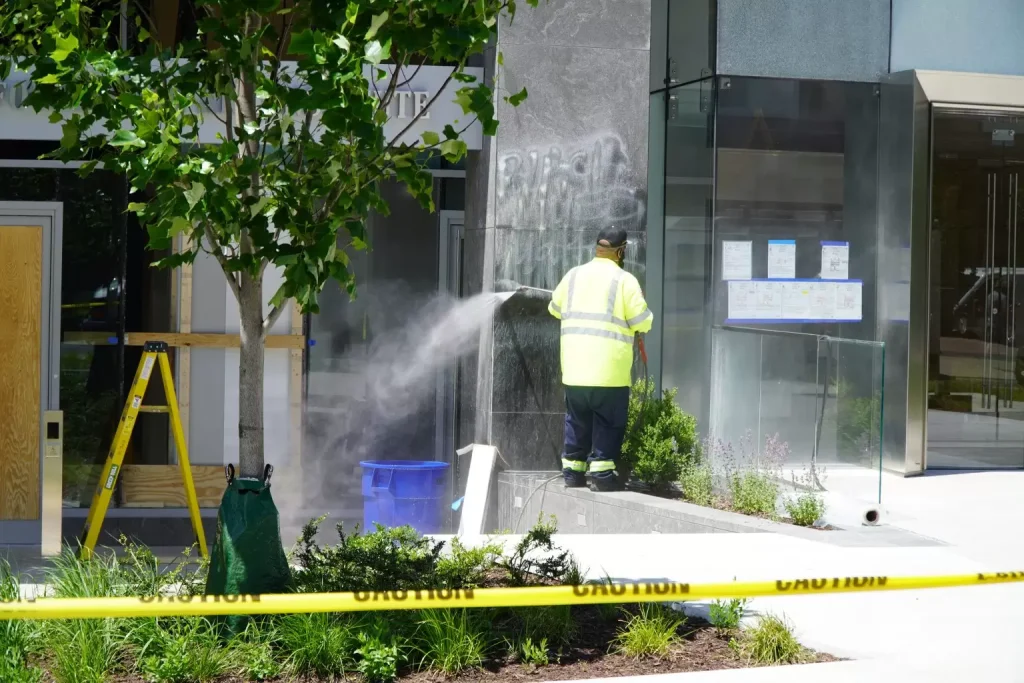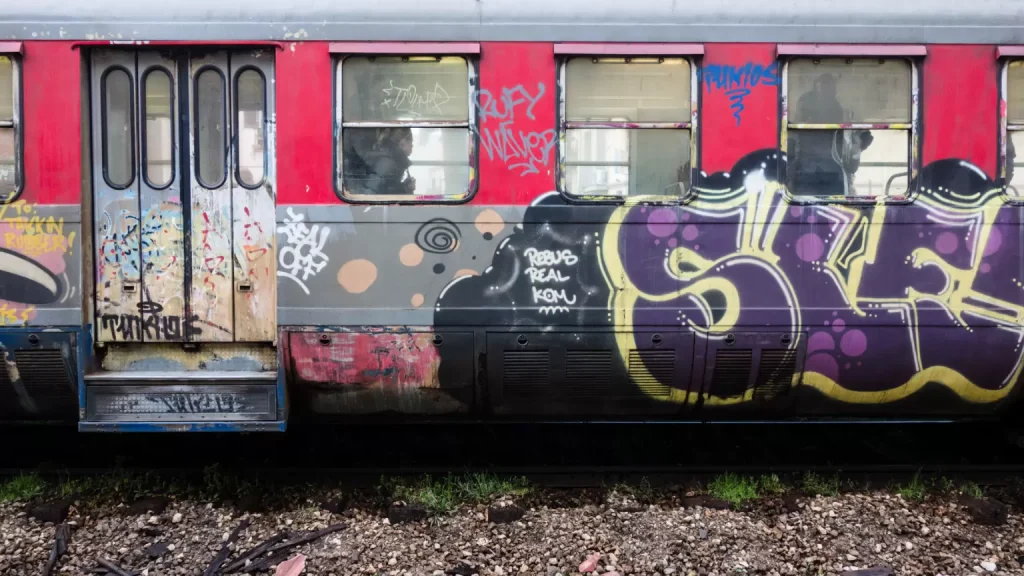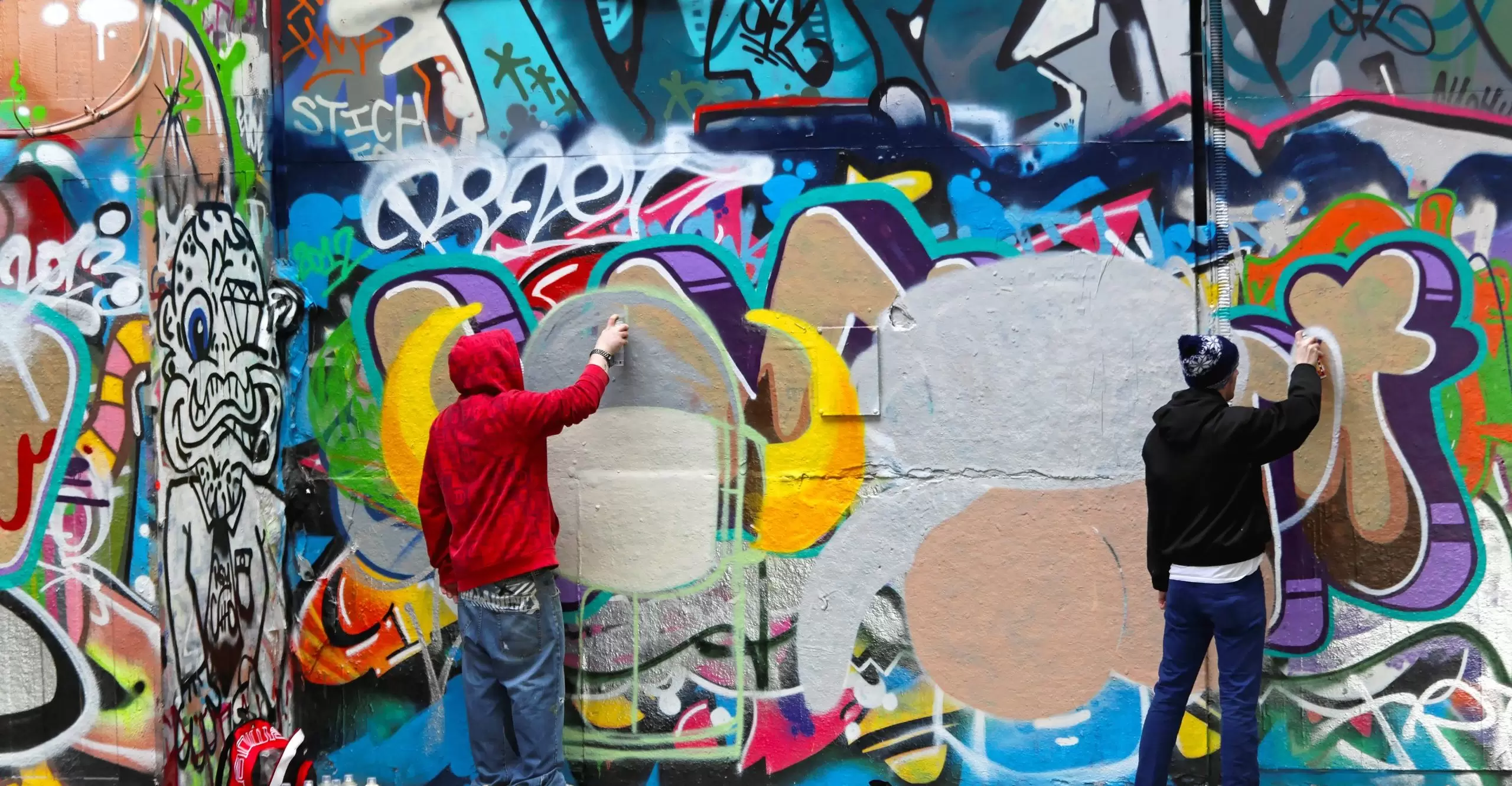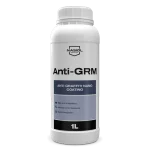Every city has a tale to tell, and graffiti often emerges as one of its most vocal storytellers. This vivid form of expression, straddling the line between art and nuisance, has businesses and urban planners pondering: How can we protect our diverse surfaces—be it glass, ceramic, plastic, composite, painted panels, or metal—from unsolicited graffiti?
Here’s a brief glimpse into what this article unpacks:
- Delving into graffiti’s rich lineage, recognizing its dual nature as both an emblem of urban culture and a potential blemish.
- Understanding the tangible challenges graffiti presents, particularly on various surfaces, from reflective glass to durable metals.
- Probing the wider societal, economic, and environmental implications of unchecked graffiti incidents.
- Transitioning from traditional graffiti removal techniques to the avant-garde world of protective coatings, underscoring the pivotal role of nano coatings.
- Showcasing Nasiol Anti-GRM, an environmentally-friendly solution that epitomizes state-of-the-art surface protection while being easy to apply and ready to use.
This discussion is geared towards enlightening property managers, businesses, and urban residents. By merging an understanding and technological approach, we can acknowledge the artistic value of graffiti while efficiently managing its downsides.

What is Graffiti and Its Purpose?
Graffiti blends color, creativity, and communication. It spans beyond modern urban images to its ancient roots, evident in early human cave paintings and Ancient Roman and Greek inscriptions.
These ancient artworks, like today’s graffiti, often served to communicate messages, declarations, or statements to the community, highlighting its enduring purpose: conveying messages and manifesting thoughts visually.

Is Graffiti an Art or Harm?
The debate is long-standing and divisive. Graffiti is a platform for skill display, opposition, and storytelling, as seen on the walls of cities like Berlin, Melbourne, and New York, narrating tales of political and social change.
Conversely, unauthorized or haphazard graffiti can spoil the visual appeal of urban landscapes, often being associated with decline or vandalism. For businesses and building maintenance professionals, it becomes a challenge requiring anti-graffiti coatings and surface protection strategies. The line between art and harm often depends on context, intent, and perspective.
Can Graffiti Cause Permanent Damage?
Graffiti can leave lasting, often negative, impressions on various substrates. The diverse mediums used, from spray paints to markers, can leave deep, irremovable residues on materials like metal, glass, and ceramic.
What are the Problems Graffiti Can Cause?
Graffiti’s influence is multifaceted, with repercussions that span beyond mere aesthetic concerns. Its implications resonate on economic, societal, and environmental fronts.
Economic Impact of Graffiti
Every square inch covered by unauthorized graffiti may translate to money spent in repainting, cleaning, and building maintenance. Over time, the cumulative cost incurred in addressing graffiti can strain financial resources.
Societal Impact of Graffiti
While some graffiti murals are celebrated as urban masterpieces, unauthorized and rampant graffiti often paints a different societal picture. Areas besieged by unchecked graffiti might be perceived as zones of increased crime or reduced safety. Such perceptions, whether factual or not, can deter potential visitors, impact property values, and affect the overall image of a neighborhood.
Environmental Impact of Graffiti
Graffiti’s environmental toll is often overlooked. Traditional removal methods can involve chemical cleaning agents that, while effective, might not be environmentally friendly. Even repeated paintovers to cover graffiti contribute to environmental concerns, adding layers of paint that can affect air quality and contribute to waste.
What is the Solution for Graffiti?
Tackling graffiti involves both preventive and corrective strategies for property owners and city officials. Traditional removal methods, such as chemical cleaners and sandblasting, have been employed to counteract its persistence.
Not only can they potentially harm the underlying surfaces like painted panels or metal, but repeated treatments can degrade the aesthetic and structural quality over time. Furthermore, the environmental concerns tied to the usage of potent chemicals cannot be overlooked.
Nasiol’s Superior Answer to the Graffiti Challenge: Nasiol Anti-GRM
Enter the realm of modern protective coatings, where solutions like Nasiol Anti-GRM present an avant-garde approach to the graffiti challenge. Unlike traditional methods, this innovative nano-coating offers a two-pronged advantage: it deters graffiti applications and simplifies the cleaning process.
A pertinent observation in the realm of graffiti prevention is the potential discouragement graffiti artists might feel when faced with a coated surface. It’s not merely about the removal; it’s about the prevention.
What makes Nasiol Anti-GRM stand out?
- Versatility: Ready-to-use and easy to apply, it’s suitable for a plethora of surfaces, including glass, ceramic, plastic, composite, painted panel, and metal. Besides graffiti, surfaces are also shielded against harmful chemicals and UV rays, ensuring longevity.
- Transparent Nano Coating: Unlike some coatings that can alter the appearance of surfaces, Nasiol Anti-GRM is transparent, ensuring the original aesthetic is maintained.
- Hydrophobicity & Oleophobicity: It repels both water and oil, ensuring surfaces remain clean and free from unsightly stains. This also makes maintenance a breeze and reduces cleaning time substantially.
- Stain Repellency: From accidental spills to deliberate graffiti, this nano coating makes sure that stains don’t find a permanent home on the treated surface. The coating’s properties result in a reduced rate of contamination.
- Eco-conscious Design: Aligned with global environmental and health standards, Nasiol Anti-GRM is environmentally friendly and REACH compliant.
- Broad Applicability: Nasiol Anti-GRM can be applied manually or through pressurized spraying. It can also be cured at room temperature or high temperature. This flexibility in application ensures it’s a fit for numerous scenarios.
How can we Prevent Graffiti?
Beyond the realm of reactive solutions lies the proactive world of graffiti prevention. Community-based interventions, such as art programs and designated graffiti areas, can redirect artistic talents to more constructive avenues. Improvements in surveillance, strategic lighting, and environmental design can also deter unauthorized graffiti activities.
However, the role of protective coatings in this preventive strategy is becoming increasingly significant. Especially when coatings like Nasiol Anti-GRM offer not only protection but also the eco-friendly advantage of removing paints with just pressurized water, eliminating the need for potentially harmful chemicals.
Final Thoughts
Graffiti treads the line between being a vibrant urban art form and a potential nuisance, adding both beauty and complexity to urban landscapes. Yet, there are instances when they shift from art to intrusion, distorting both private and public properties.
In this dance between art and nuisance, protective coatings like Nasiol Anti-GRM serve as the bridge, ensuring that cities continue to resonate with stories, but on terms that respect both the artist and the canvas.

